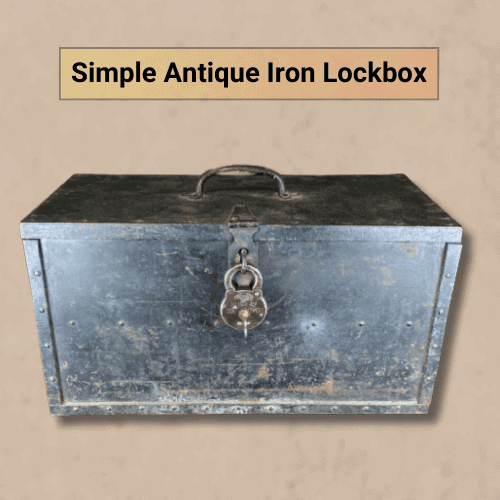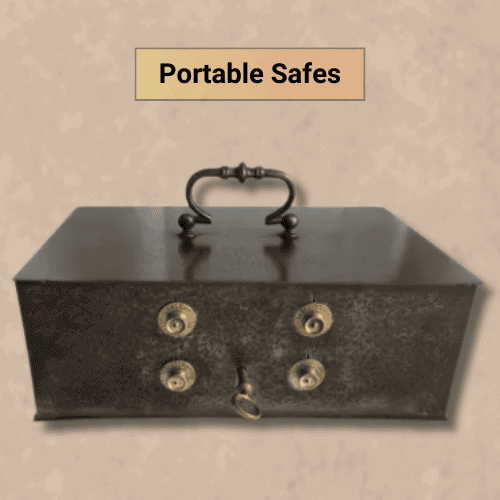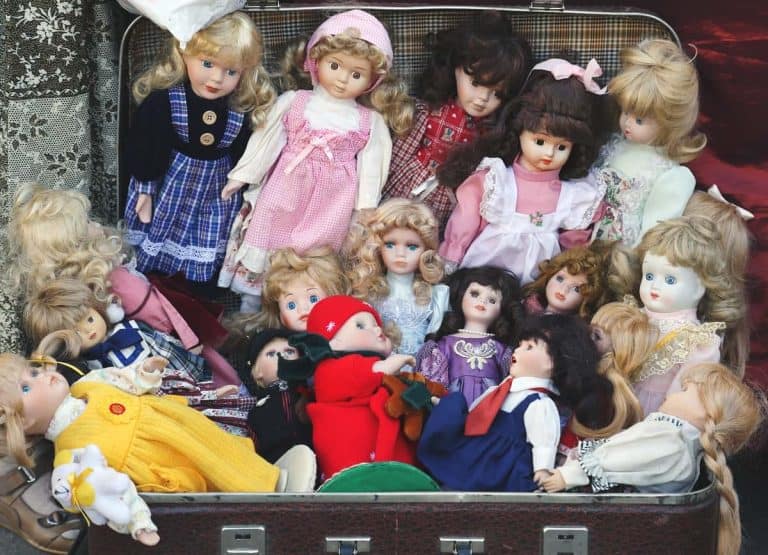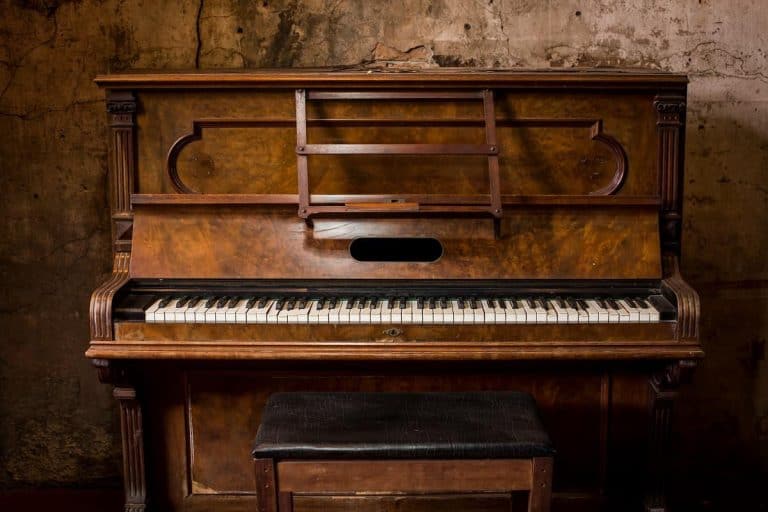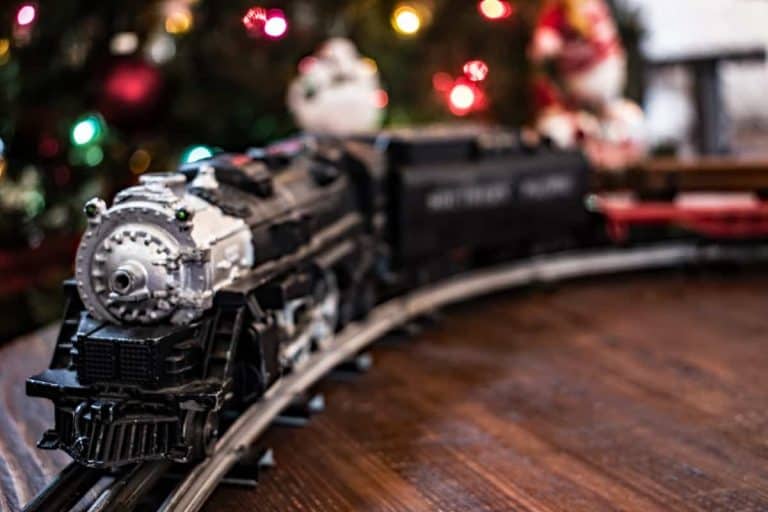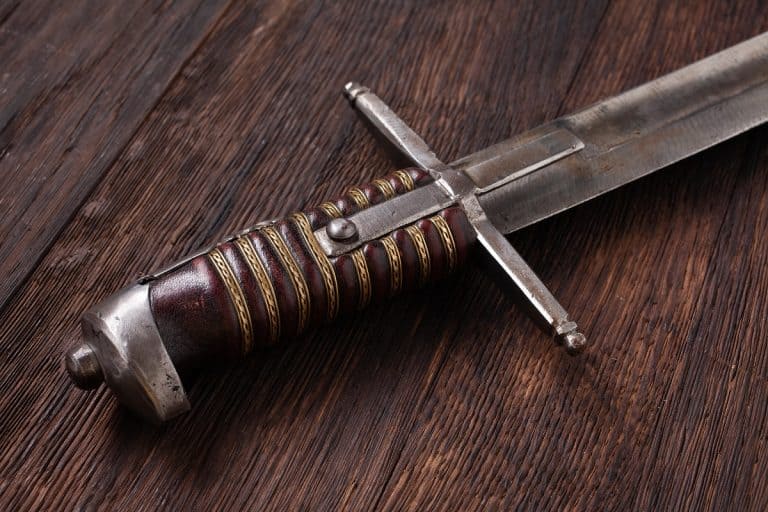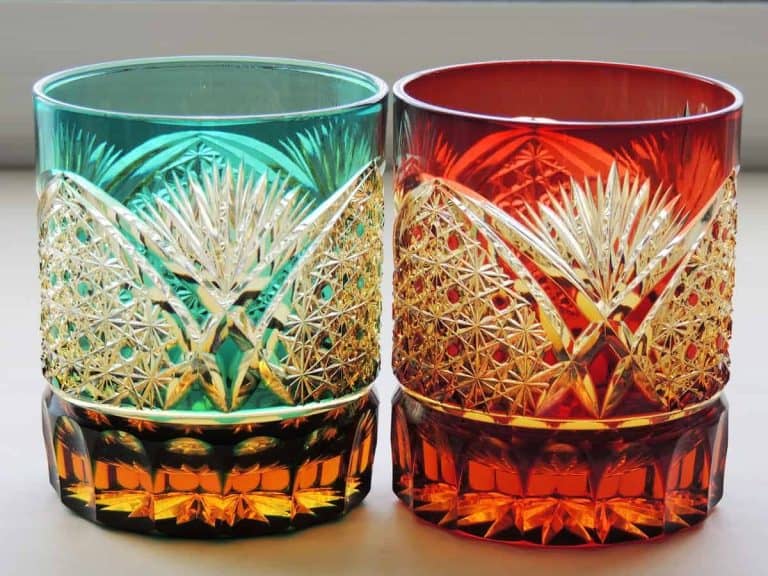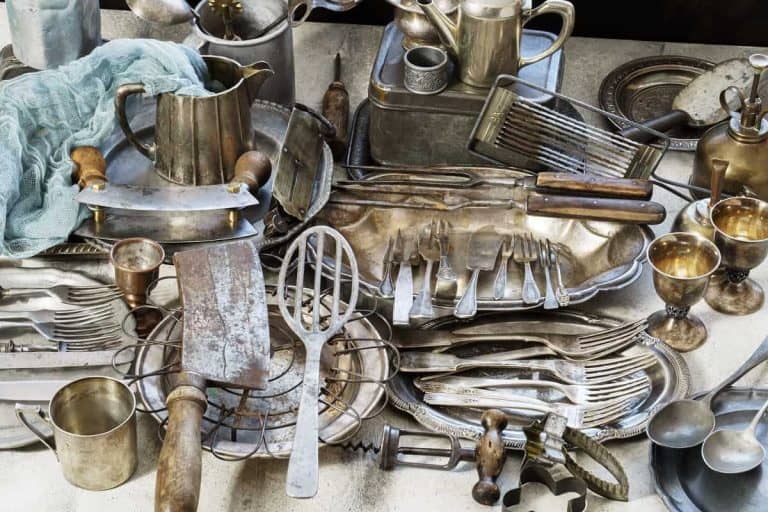Humans have been accumulating possessions for thousands of years.
The earliest known examples of human-made objects, such as stone tools and jewelry, date back to the Paleolithic era, around 40,000 years ago.
As human societies evolved, so too did our possessions. With these societies becoming more complex and hierarchical, the value of these belongings grew exponentially larger, and the need to protect possessions became increasingly important.
The apparent security measures for wealth accumulated in crops and livestock included creating protective legal systems, recruiting active defense forces, and using systems incorporating locks and walled fortifications to keep out the bandits and invaders.
However, to secure variable amounts of precious inanimate objects such as gold, property rights, and art, we had to get significantly more creative. Technical developments to serve this purpose include complex systems of hidden chambers, traps, and secret passageways, eventually culminating in creation of safes and vaults.
A safe is a secure storage container that is designed to protect valuable items from theft, fire, and other forms of damage.
Editor’s Note
Ever wondered why safes and vaults have different names while appearing to be the same thing? The critical difference is in their ease of mobility.
Reinforced boxes that can be installed/uninstalled by experts and moved relatively quickly from one location to another are considered safes. In contrast, vaults are generally considered permanent installations that are often as large as regularly-sized rooms that are fully integrated into the building housing them.
Both safes and vaults are typically built using steel-reinforced concrete.
Similar to what you get with the most critical technologies from our past, the existing relics that tell the stories of the developmental process of safes, from crude contraptions to hi-tech apparatuses, are valuable to collectors today.
So, what is the value of an antique safe?
The value of antique safes can vary greatly depending on several factors, such as the age, condition, size, and brand of the safe. Additionally, the market for antique safes can fluctuate, so, prices can change over time.
On average, you can expect smaller (and less impressive) safes can sell for several hundred dollars, typically in the $200 – $400 range.
Even smaller units—and those that barely qualify as full-fledged safes—will sell for under 100 bucks, while more impressive, often larger (and restored) specimens—including bank safes and early vault prototypes—will quickly sell at auction for north of $500 and can reach prices as high as $10,000.
To fully understand why antique safes are this highly valued, you need to understand the history of this technology and how it managed to rise to prominence and maintained several use cases over the millennia.
History of (Antique) Safes
The history of antique safes can be traced back to ancient civilizations when people first began to use primary forms of storage to protect their valuables.
The earliest known safe was discovered in the tomb of Pharaoh Ramesses II in the 13th century B.C. It was made of wood and consisted of a locking system resembling the modern pin tumbler lock.
Over the centuries, safes continued to evolve and develop new features to improve security. In the Middle Ages, safes were made of wood and metal and were designed to protect valuables from fire and theft.
These safes often featured multiple locking mechanisms, including combination locks and key locks, to provide added security.
During the Industrial Revolution in the 18th and 19th centuries, technological advances allowed for the mass production of safes.
This led to increased experimentation and testing and the development of new types of safes, such as the fireproof safe, which was designed to protect documents and valuables from fire. These unique safes were built with fireproofing materials, such as asbestos, to protect the contents from damage in the event of a fire.
The invention of the combination lock also significantly improved the security of safes during this time period.
In the late 19th and early 20th centuries, safes continued to evolve and become more sophisticated. The introduction of these more-burglar-resistant safes, which were designed to resist forced entry, was a significant development in this period.
These safes were made of thicker and more robust materials and often featured complex locking mechanisms to deter thieves.
One of the most exciting things about safes from this period is the variety of locking mechanisms that were employed by safe manufacturers. Some antique safes were locked with a simple key, while others used a combination lock, which was operated by dialing a series of numbers. Some antique safes were even opened with a unique key kept in a separate, smaller safe, known as a “key safe.”
Throughout the 20th century, safes continued to evolve and improve regarding security and functionality.
The invention of electronic locking systems, such as biometric locks and digital locks, significantly improved the security of safes. Additionally, advances in fireproofing technology allowed for the development of safes that could withstand high temperatures and intense fires for extended periods of time.
Editor’s Notes
The importance of safes throughout history can be attributed to the need to protect valuables from theft and fire. Safes have always been essential for protecting important documents, money, and other valuable items. As societies became more complex and economies grew, the need for secure storage of valuable items increased.
Today, safes are used in various settings, including homes, businesses, and government buildings. They are available in a wide range of sizes and styles and can be customized to meet specific security needs. In addition to traditional safes, modern technology has also led to the development of digital safes, which can be accessed and controlled remotely using a computer or mobile device.
The history of antique safes is a story of evolution and innovation. From the earliest clay safes of ancient civilizations to the modern digital safes of today, safes have undergone significant changes and improvements over time.
Throughout history, safes have been an essential tool for protecting valuable items from theft and fire and will continue to be so in the future.
Consequently, most surviving items from all epochs in the history of safe technology development are considered valuable and highly sought after by collectors everywhere.
However, when considering “antique safes,” we can effectively limit our purview to prototypes developed in the 19th and 20th centuries. Specimens that predate this period are few, and far between and rarely on the open market. You are more likely to find these pieces stowed for display in a museum.
Editor’s Notes
With technological advances and mass production machinery during the Industrial Revolution, safes quickly became more affordable and accessible to the general public.
This switch increased the use of safes in homes and businesses as people sought to protect their valuables from theft and fire. This high demand and widespread use of safes are partly responsible—as well as the relative recency of that era—for the mass of surviving specimens from this period that are available on the open market today.
This period also produced graceful, sophisticated units, beautifully decorated with intricate engravings and designs, as the middle and higher class sought out pieces that could add flair to home aesthetics.
Antique Safe Identification: Types and Styles
Safes have seen significant evolution and improvements over time. From the earliest clay safes of ancient civilizations to the modern digital safes of today, safes have dynamically evolved to meet the needs of different time periods.
Consequently, there is a wide array of antique safe types—many of them overlapping in properties and features—from different periods.
Since an attempt to segment these various safe types into separate categories will quickly become convoluted, we have opted instead to provide an all-inclusive list of antique safe types and styles, paying no mind to the potential grouping factors.
Some of the most popular antique safes you can find include:
Clay Safes: The earliest known safes, dating back to more than 3000 years ago, were made of clay and were designed to protect valuable items. These were primarily used in ancient civilizations such as Mesopotamia and Egypt.
Wooden and Metal Safes: During the Middle Ages, safes were made of wood and metal and were designed to protect valuables from theft. These safes often featured multiple locking mechanisms, including combination locks and key locks, to provide added security.
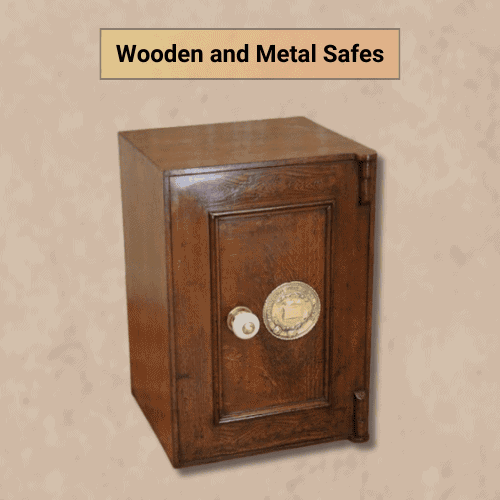
Fireproof Safes: The invention of the fireproof safe in the 18th and 19th centuries was a significant development.
This safe was designed to protect documents and valuables from fire. However, the fireproofing technology of this time period was not as advanced as today and was found lacking many times.
Burglar-resistant Safes: In the late 19th and early 20th centuries, the burglar-resistant safe was yet another significant development. These safes were made of thicker and more robust materials and often featured complex locking mechanisms to deter thieves.
Combination Safes: These safes have a combination lock that uses numbers and letters to lock the safe. They were first invented in the early 19th century and quickly became one of the most popular safe-locking mechanisms in the early 20th century.
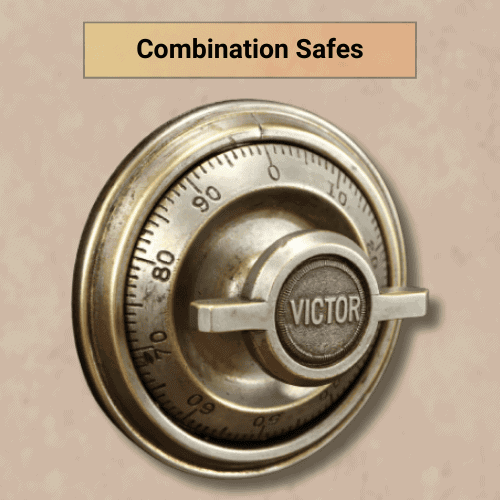
Electronic Locking Systems Safes: Throughout the 20th century, technological advances, such as the invention of electronic locking systems, significantly improved the security of safes. These safes were often used in businesses and government buildings.
Advanced electronic locking systems safes pack even more advanced security features like biometric locks, digital locks, and other electronic systems that make these safes more secure and difficult to break.
Digital Safes: Digital safes are controlled by a digital keypad, a computer, or a mobile device. They were first invented in this century. Thanks to the increasing prevalence of Internet of Things capabilities, some of these modern safes bring even more advanced features, such as remote access and real-time alerts.
Floor Safes: Floor safes are installed or simply placed on the floor and were typically used in businesses and homes. They were first invented in the 19th century and are still in use today.
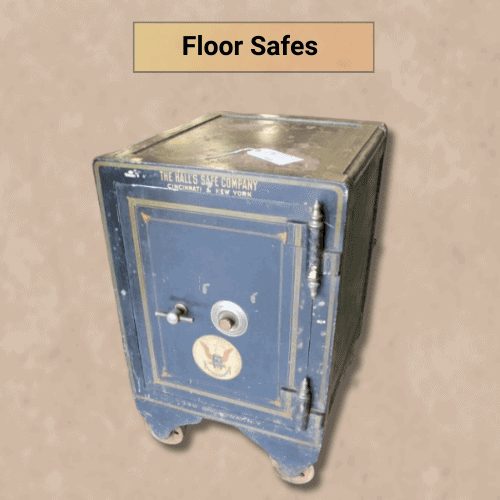
Wall Safes: Wall safes are safes that are installed into walls. They were first invented in the 19th century and are still in use today; they are known to be more secure than other types of safes because they are often hidden and difficult to access.
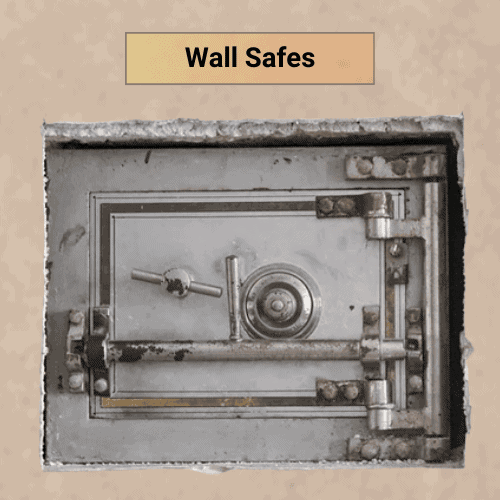
Cabinet Safes: are freestanding safes that were often used in businesses to store cash and other valuables. Popular in the late 19th and early 20th centuries, they were unique in that they combined a steel interior with a wooden exterior. This design allowed for both security and aesthetic appeal.
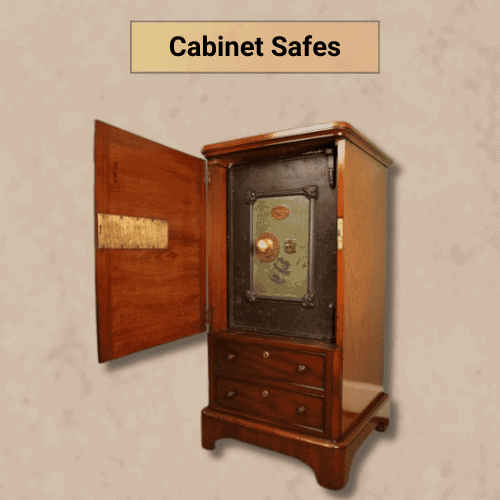
Today, these safes have experienced a resurgence in popularity, with many people restoring and customizing them.
Features such as heraldic symbols, secret compartments, and ornamental nameplates are often retained, while new elements such as cocktail bars, humidors, and minibars are added to the original construction. Additionally, they retain their locking systems, escutcheons, and engraved marks. They are considered beautiful pieces of furniture as well as secure safes.
Victorian Parlor Safes: These safes were designed to be decorative pieces of furniture that could be displayed in a parlor or living room. They were popular in the late 19th century and are considered collector’s items today. They are characterized by their ornate designs and intricate detailing.
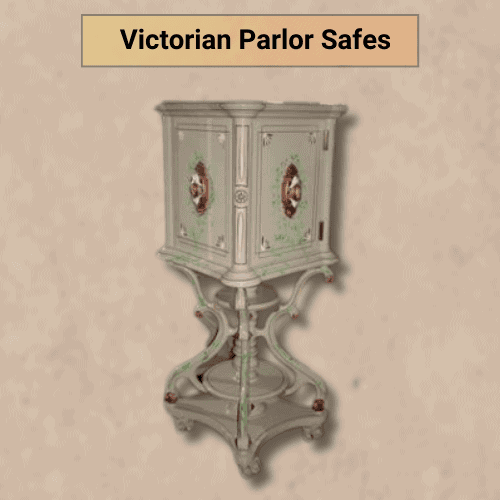
Mosler Cannonball Safes: These safes were designed by the Mosler Safe Company and are characterized by their round shape and heavy-duty construction. They were used in banks and other institutions during the late 19th century and are considered to be very rare and highly valuable today.
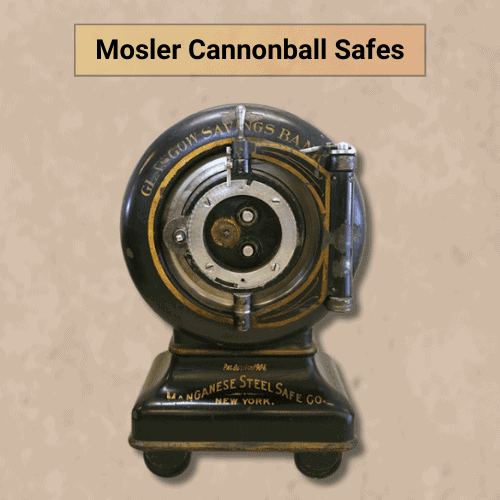
Portable Safes: These safes/lockboxes are designed to be mobile and can be easily carried around. They are commonly used for travel, outdoor activities, and temporary storage solutions.
Antique Safe Market Value
Whether you’re a collector or simply looking for an exciting conversation piece, an antique safe can be a fascinating and valuable addition to any collection.
However, one major factor for finding the exemplary specimen for your collection is often price, and here, there are a wide array of options and price ranges available to you.
Antique safes can hold considerable value for both their historical and practical significance. The market value of each piece can further vary greatly depending on various factors, including the safe’s age, condition, size, brand, and rarity.
Editor’s Note
Generally speaking, an antique safe is one that is over 100 years old. However, some collectors may consider safes that are as young as 50 years old to be antiques. As with any antique item, the age of the safe is an essential factor in determining its value. The older the safe, the more valuable it is considered to be.
Additionally, the demand for antique safes can fluctuate, resulting in price changes over time.
On average, smaller safes can be purchased for a few hundred dollars, with prices typically falling within the range of $200 to $400. However, even smaller and less impressive units may sell for less than $100.
In contrast, more extensive and/or impressive safes, including bank safes and early vault prototypes, can fetch prices of more than $500 and even reach upwards of $10,000 at auction.
The physical state—and any restorations—of the safe also plays a role in determining the price; a fully restored safe will usually fetch a higher price than a non-restored one.
Additionally, the brand of the safe also plays a role in determining its price on the open market, as buyers typically show a strong preference for strong name brands. Safes made by well-known and reputable manufacturers such as Mosler, Diebold, and Hall’s will usually fetch a higher price.
Editor’s Note: Mosler Safes
The Mosler Safe Company was a safes and security equipment manufacturer founded in 1867 by Gustave Mosler in Cincinnati, Ohio. The company quickly gained a reputation for producing high-quality safes and vaults that were widely used by banks, businesses, and government institutions.
One of Mosler’s most notable achievements was the creation of the “Double Dial Combination Lock” in 1873; this invention improved the security of safes by allowing for a second combination to be set for the lock, providing an extra layer of protection.
During World War II, Mosler supplied the U.S. government with safes and vaults for military use, and the company’s products were also used to protect classified documents and equipment. Mosler safes were also used to protect the Declaration of Independence and the U.S. Constitution during their tour across the country in the 1940s.
Mosler’s safes were also used in many high-profile installations, such as the US treasury, the FBI, and the CIA. The company’s reputation for producing durable and secure safes made it the go-to choice for many institutions.
For the many decades of their existence, Mosler were the trailblazers at the forefront of the development of the most secure safes in existence. Their safes were so reliable that they were the only ones confirmed to have survived an atomic bomb detonation.
In 1925, a Japanese bank invested in several Mosler vaults for one of its branches in Hiroshima. On August 6, 1945, the United States Armed Forces dropped an atomic bomb on the city, and one of the few structures to survive the blast was the Mosler vaults. An army surveyor who was assessing the damage to the city noticed that the vaults had not only survived the bomb but remained in perfect working condition.
Despite the company’s closure in 2001, collectors and enthusiasts still consider Mosler safes highly valuable and sought after. They are known for their durability, high-security features, and distinctive design and are considered to be some of the best safes ever made. Even today, many Mosler safes are still in use, providing reliable security for their owners.
For example, a small, non-restored safe made by a lesser-known manufacturer may sell for around $300, while a larger, fully restored safe made by Mosler can fetch prices of $5000 or more.
Furthermore, some safes that are considered rare or unique such as early prototype safes and safes with historical significance, can fetch prices even higher than $10,000.
It’s also worth noting that the location of the sale also impacts the price; safes sold in regions with a higher demand for antiques may fetch a higher price than those sold in areas with lower demand.
Overall, the value of antique safes can vary greatly, and it is almost impossible to give exact figures on what to expect for a specific safe type.
However, with the broad ranges we highlighted above paired with the critical factors that play roles in determining market prices, you should quickly get a general idea of the price of the type of antique safe you want.
Valuing Antique Safes
If you are on the flip side of the trade and instead want to sell an antique safe you found, follow this process instead.
Determine the Safe’s Age and Manufacturer: Research the safe’s markings and labels to determine its age and manufacturer.
While these details may be hard to find (not exist) on most antique safes, if you do find them, they may considerably aid you in this process. Safes made by reputable manufacturers such as Mosler, Diebold, or Hall’s will be relatively easier to look up for average prices.
Research Comparable Sales: Once you have figured out the model and other details of the safe, you can proceed to look for recent sales of similar safes to get an idea of their current market value.
Check online auction sites like eBay, Craigslist, Facebook Marketplace, LiveAuctioneers, Invaluable, and Barnebys.
Editor’s Note:
Remember to look for historical significance or unique features: A safe with historical significance or special features such as an early prototype or one that was used in a bank will fetch a much higher price than regular safes on the open market.
Get an Appraisal: If you’re still unsure of the safe’s value, consider getting an appraisal from a professional appraiser.
While finding an appraiser that specializes in antique safes, you can leverage other appraisal bodies to find one that can handle your request. Some of the best places to being your search include:
- International Association of Firearm and toolmark Examiners (IAFTE)
- National Association of Watch and Clock Collectors (NAWCC)
- American Society of Appraisers (ASA)
- Appraisers Association of America (AAA)
- International Society of Appraisers (ISA)
- National Antique & Art Dealers Association of America (NAADAA)
- Professional Appraisers Association (PAA)
- Certified Appraisers Guild of America (CAGA)
- International Society of Appraisers (ISA)
- Appraisers National Association (ANA)
Through these bodies, you can find qualified appraisers near you. However, it’s best to check with the appraiser to verify that they specialize in antique safes before engaging their services.
Additionally, you can also check with local antique dealers or experts in your area; they may be able to recommend an appraiser with expertise in antique safes.
Decide How to Sell it: Once you have an idea of the safe’s value, you can decide how to sell it. You can sell it to a collector, a dealer, or at an auction.
Editor’s Notes:
Keep in mind that the value of antique safes can fluctuate depending on the market demand, so it’s important to research current market prices.
Be cautious of scams and frauds, and always make sure you are dealing with reputable dealers and experts.
Selling the safe to a collector or a dealer may fetch a lower price than selling it at an auction, but it will be quicker and easier.
Samples of Valuable Antique Safes and their Sold Prices
Here is a selection of finalized antique safe listings we found online to give you a feel for how much antique safes can cost on the open market.
1. The most expensive completed antique safe listing we could find off the cuff was this antique Diebold Manganese miniature safe (with its keys intact and functional) that sold for a massive $17,754 at an auction on eBay.
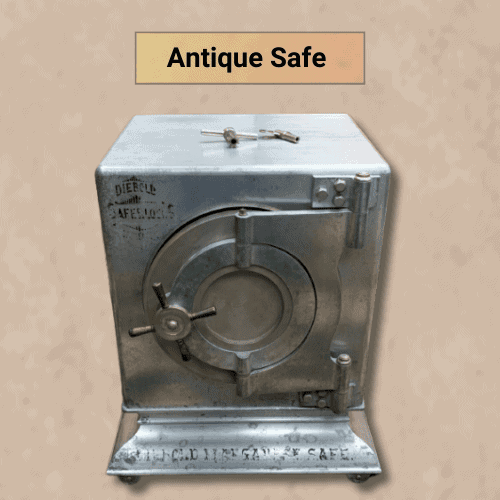
Wondering why a miniature safe is this expensive? The piece was a Salesman’s sample for Diebold (one of the most prominent safe makers of the 20th century) that is now extremely rare. This listing underlines how valuable rare safes with historical significance can get.
2. This antique floor safe was built for First National Bank of Ballston Spa, a village in New York State, in the 1800s. The 23-inch-high safe was made by Briggs & Huntington of Rochester NY. It sold at auction in January 2023 for $1350.
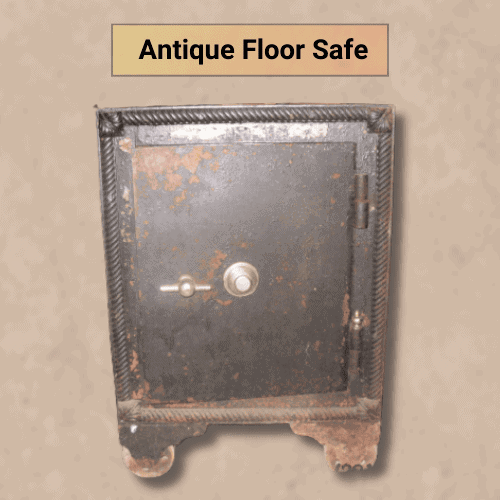
3. This 100+-year-old Herring-Hall-Marvin Safe with a restored and modernized exterior sold for $1200 on eBay. Restored.

4. Another century-old safe on wheels, marked I.H. Dehart sold for $1200. Despite its fairly antiquated look and rough condition, the quite aesthetic safe was still in full workable condition.
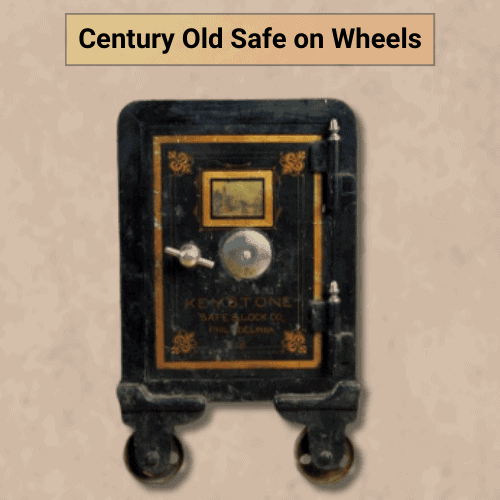
5. This big cabinet safe marked Cury Safe Co. with a working combination lock sold for $800.
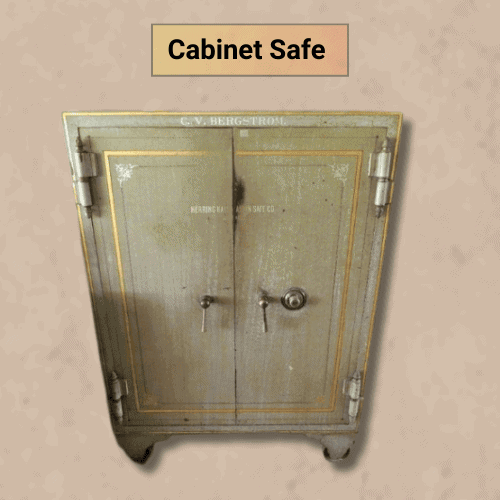
6. An old Mosler Safe with a key for wooden drawers sold for $222.5 despite the seller not having the combination code.

7. This simple antique iron lockbox from the 1800s used by Wells Fargo sold for $119 despite its pretty roughed-up condition.
